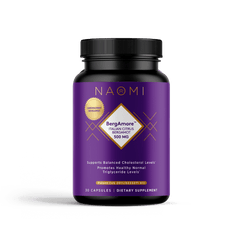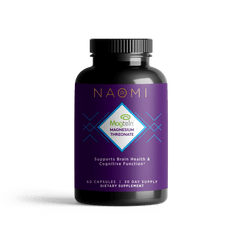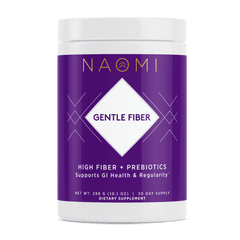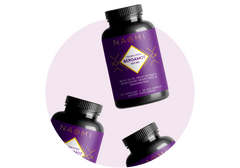Feed Your Hunger Not Your Cravings PART 1
If there’s one thing I want you to understand about your cravings, it’s that they are part of a metabolic disease process. What I mean is that your cravings aren’t random, and neither are they representative of your moral standing.
If you have cravings, this doesn’t make you a bad person and if you don’t have them, this also doesn’t make you better than anyone else. But if you do have cravings, you want to appreciate them as a form of communication from the deepest cells in your body. They are telling you about your metabolic health. Cravings are born out of imbalances in our nutritional status. While some people experience cravings due to micronutrient deficiencies, most of us have cravings for sugary, fatty junky foods stemming from an imbalance in carbohydrate and fat intake. Too many junky carbohydrates and not enough of the good fats cause an interference with normal metabolic hormonal function. A byproduct of this imbalance is the cravings many of us experience several times a day. Your body wants you to hear the message these cravings are sending you as a genuine cry for help — not as a cry for more cookies, pasta, cereal, pizza, bread or muffins.
I have long struggled with cravings and over the years I have been so lucky to work with some of the top medical experts studying how human physiology responds to the environmental cues that trigger cravings. I’ve listened to them and applied their advice. Over the years I have completely transformed my relationship with food and I am so proud to say that for me, cravings are a thing of my past! But I know how difficult they can be to undo and so in this two-part series, I want to share what I’ve learned with you in hopes that you slowly make changes in your lifestyle and change your relationship with food, so you too can say they are a thing of your past as well.
10 Steps To A Cravings – Free Life
1. Decide And Commit
The first part of letting go of your cravings is to mentally lace up. The chemicals, oxidized fats and refined sugars hidden in processed food can hijack your physiology and reinforce your cravings. If you are going to win the fight against cravings, it’s going to entail a paradigm switch in how you perceive food. What do you value more? Quick, fleeting pleasure from eating a junky food or long-lasting pleasure from feeling beautiful and healthy from the inside out? While I admit it’s tempting to grab a lunch meeting out or indulge in trendy restaurants while traveling, the convenience and fun of doing so doesn’t compare to the negative consequences on my health. So, the risk doesn’t outweigh the social benefits.
The point is, there will constantly be a million excuses for you to eat the kinds of food that trigger cravings, but once you flip how you look at food, it will become easier to make decisions that support your long-term wellness. Once in a while straying from your normal is completely fine and even healthy but it’s what you eat on a day-to-day basis that constitutes your cellular makeup. Most people don’t like to admit it but getting and staying healthy depends on you getting acquainted with your kitchen again. There are just too many toxic ingredients lurking in convenient foods and even high-end restaurants, so we can’t expect to be healthy if we eat out of the home on a consistent basis.
Think about what you want and then decide to commit to that end goal. Along the way, you’ll be put in many positions that will entail you to make a decision about what you eat. Each decision you make eventually leads to how healthy your body is. If you are serious about wanting to release cravings, maintain a strong sense of your commitment to yourself.
One of the ways I like doing it is by keeping a daily journal. I like to record how I’m feeling, perhaps what I’ve eaten and how it’s impacted my energy levels, sleep, mood, body composition, exercise capacity and of course, my cravings. Food is powerful information and if we pay attention, it’s constantly talking to us. Try keeping a journal so you can play an active role in the conversation!
2. “If You Don’t Like Your Broccoli, Add More Butter” – Julia Child.
I want you to start using more traditional fats such as butter, ghee, coconut, olive, avocado, and sesame oils, and even bacon fat for cooking. I’ve heard consistently from so many of the experts that our bodies thrive on fat as the preferred fuel source. While it might seem counterintuitive after decades of being told to avoid butter and bacon, I think adding more of these good fats to your diet will give you a huge shift in your cravings. Other foods to start eating more of are nuts, seeds, eggs (with yolks), fatty cuts of meat, wild fish, full-fat dairy (if tolerated), coconut, avocado and even dark chocolate. Please opt for the highest quality animal foods accessible to you. Toxins are stored in fatty tissue. While there is nothing inherently wrong with animal products, scientists think that it might be the environmental chemicals, hormones, and antibiotics that become lodged in the fatty tissue of animals (that we then ingest) that stir some health issues. As best you can buy either directly or close to your farmer or fisherman as possible and opt for products from wild pastured animals and fish.
3. Cut Out Sugar
Most of us know that sugar is not a health food. But it’s actually thought of as being one of the foods that pose the highest risk to our health due to its negative impact on insulin. Sugar stimulates the release of insulin. Insulin is known as our fat storage hormone that has anabolic abilities. That just means it’s responsible for building. But when we’re having cravings the last thing we want is to eat foods that encourage us to eat more of them!
The other issue with sugar is that it’s highly palatable and so hard to control our intake of it. Who experiences pure pleasure and then thinks stopping that pleasure is a good idea, right? Sugar is known to cause a euphoric drug-like effect in our brains and gives us a nice jolt of happiness. But it’s not the right kind of natural euphoria from our own neurochemistry but instead, a superficial high that brings us down as quickly as it lifted us up. During a sugar crash, our blood sugar drops and we experience a dip in mood and energy. To return to our normal state our brain coordinates with our hormones a way to get our energy up and that’s why we experience craving after craving. In this way, sugar becomes addictive on a biological level. This is why cravings are not a moral issue.
Sugar cravings are completely a physiological rollercoaster ride of hormones rising and falling. If you are serious about banishing cravings, cut out all added sugars until you are “fat adapted.” This means anything containing sugar or one of its many pseudonyms needs to be avoided.
Look for these aliases:
- Sucrose, glucose, fructose, high fructose corn syrup, malt, barley malt, rice, maple, palm, coconut and agave syrup.
4. Swap Out Refined Grains For Unprocessed Carbohydrates
(Carbs satisfy a craving but not your true hunger)
Along the same lines as sugar, I want you to stop eating any product made from a whole grain that has been refined into flour. This includes all flours even gluten-free varieties. One expert once explained to me that flour looks like cocaine and on some level, it mimics it as well. People enjoy the high from cocaine because it’s a fine powder that is quickly absorbed and works immediately. Flours work in a similar way. While obviously not a drug like cocaine, due to their refined nature they, like cocaine, don’t take long to become absorbed into your bloodstream and once there, they quickly initiate that roller-coaster we spoke of above. While once in a while a piece of artisanal bread or baked good is fine, treat these foods as just that — treats. It’s okay to indulge in treats special times a year especially when we’re celebrating things like birthdays and holidays. But these foods truly aren’t real food so they don’t need to be consumed on a daily basis. Learn more about Fats First, Carbs Last.
5. Void All Vegetable Oils
Vegetable oils are largely what make junk foods, junk! The use of polyunsaturated fats such as corn, canola, cottonseed, soy, safflower and sunflower oils is likely one of the biggest culprits for cravings. These fats oxidize easily which means they go rancid. You’ve likely smelled that “off” aroma before. That rancid smell translates to poorly functioning fats inside your cells. Poor fats interfere with the hormones regulating cravings. Bad fats are a huge impediment to how well your body functions. The less able your body is to function the weaker you’re going to feel and the lower your energy will be. Things like insomnia, mood disturbances as well as rampant systemic inflammation make it easy to see how consuming a diet full of bad fats could lead to an increase in cravings especially for foods supplying false energy in the form of sugar. When your system is compromised it’s hard to make decisions that are good for you because sometimes the better choice requires a little effort.
Let yourself off the hook and instead of going cold-turkey, if you are struggling, just go slowly and wean yourself off of processed or packaged foods. Perhaps choose one meal per day to begin eating nothing but the good fats and real food. As you gain strength and confidence it will become effortless to continue eating this way for every meal.
6. Stop Snacking
This one was eye-opening for me. Every nutritionist advises having a healthy snack between meals in order to balance blood sugar. But did it ever occur to you that the best snack for balanced blood sugars could possibly be no snack? Try omitting the morning and afternoon snack altogether and see what happens. If you are hungry between meals, try eating more during your meals. In other words, it’s better to eat a few large meals per day than to constantly eat every two to three hours.
Think of what most of our snacks are made up of — sugar. Most people aren’t whipping out vegetables and olives at 3:00 pm. Instead, we’re craving candy bars, sweet coffees or a bag of chips. Even if you’re following a low carbohydrate lifestyle it’s still easy to get caught up in this sugar cycle with so-called healthy snack bars that have dried fruits and nuts or bars that use a lot of sugar alternatives like monk fruit, erythritol or stevia. While these are definitely better options, any food that your brain registers as “sweet” has the potential to keep you stuck in the vicious cycle of cravings.
Additionally, all the food you eat is going to have an impact on your insulin. While fat elicits the smallest surge in insulin, even a snack with good fats will still shift your system away from a fasting state and into a fed state. It’s important to give your body a break from eating to provide a break in digestion but also because once you are in the fasted state, the hormones that are a necessary part of undoing cravings get busy at work. If you are constantly in the fed state and using snacks between meals, you’re not really allowing yourself to release cravings.
If you have to snack, especially at first, please choose good fats like macadamia nuts or nut butter, avocado, or a fat bomb made with coconut fats as this will cause the least amount of insulin to be released. The less insulin released, the better able your body will manage cravings. You can also never go wrong snacking on fibrous non-starchy vegetables. Enjoy them with some fat like olive tapenade or guacamole to help increase absorption of their vitamins and minerals.
Stay tuned — next up will be Part Two in our series: Feed Your Hunger, Not Your Cravings.



















